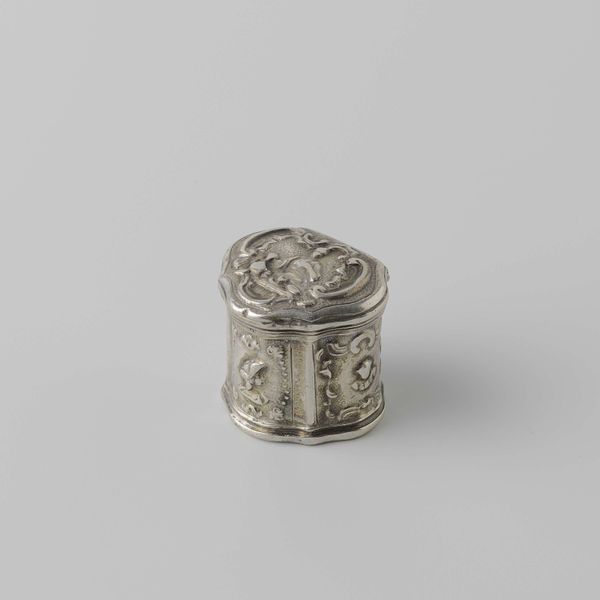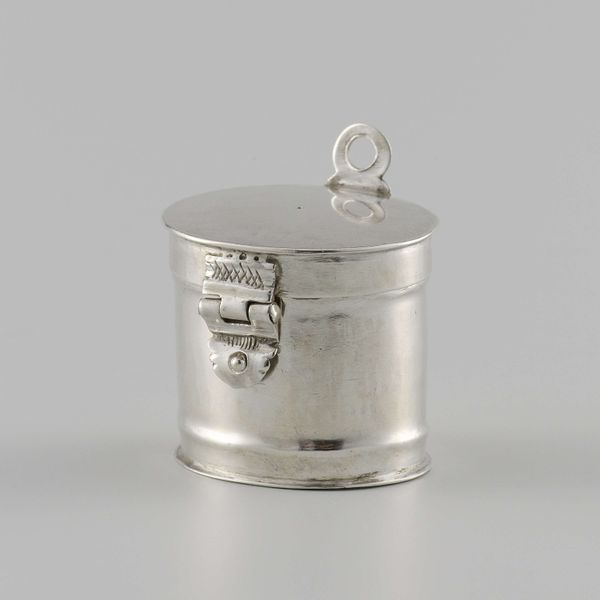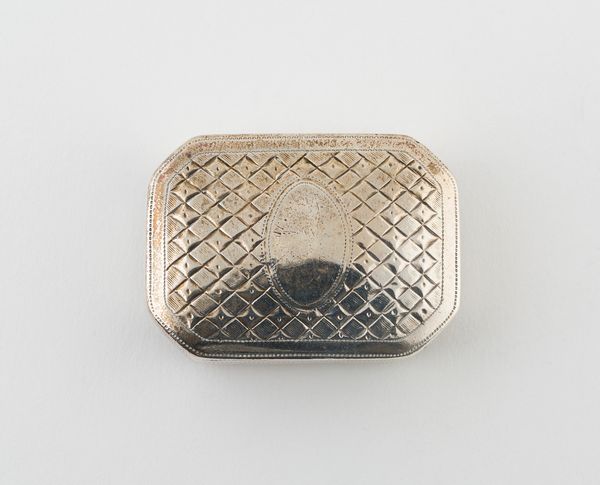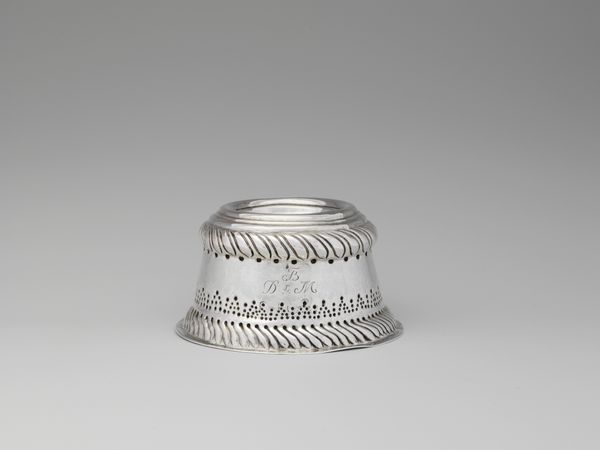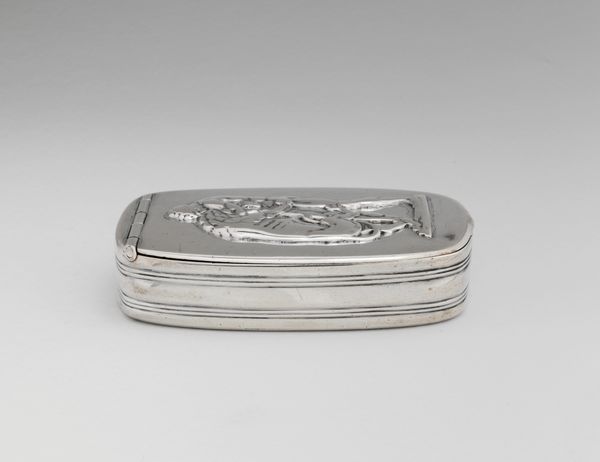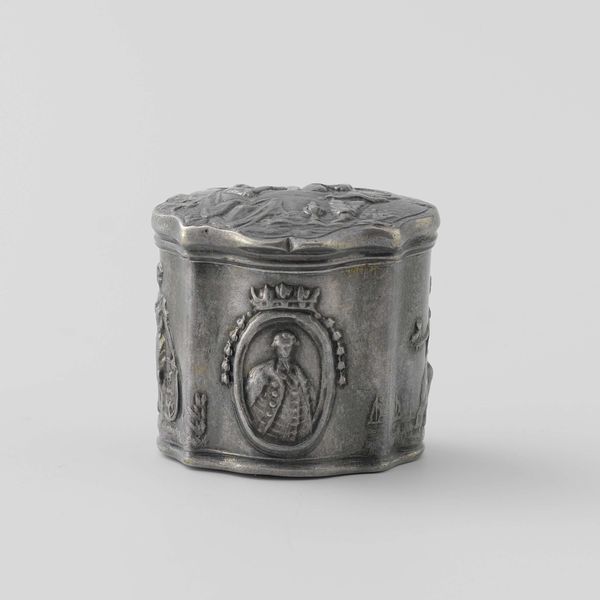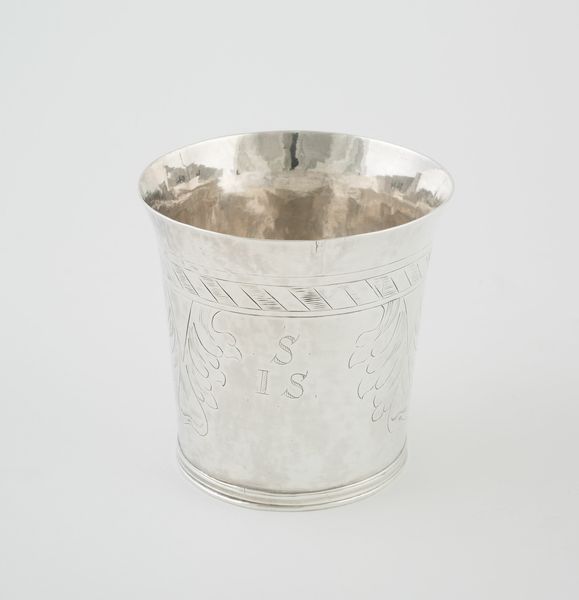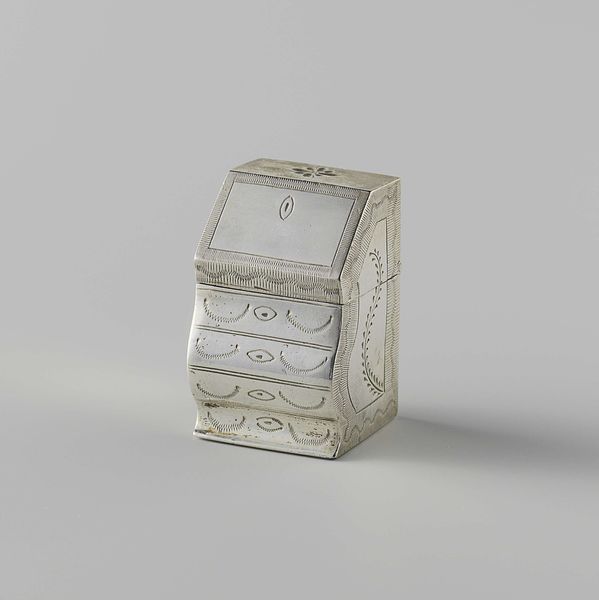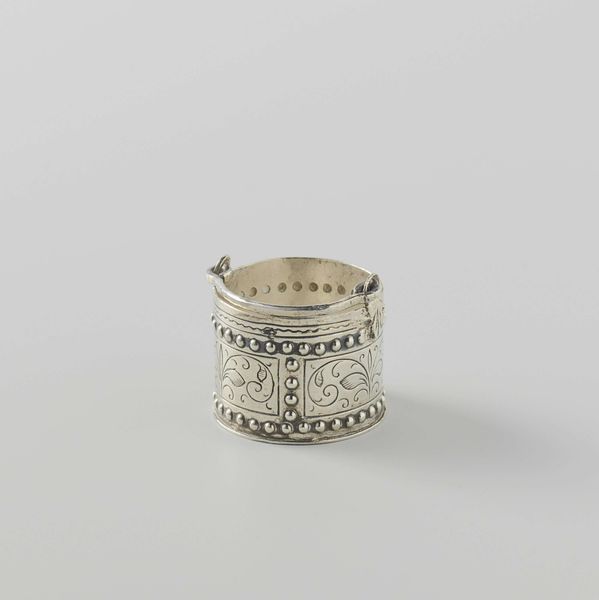
silver, metal
#
neoclacissism
#
silver
#
metal
#
decorative-art
Copyright: Rijks Museum: Open Domain
Curator: This captivating little treasure is called "Kabinet," a work of decorative art created between 1810 and 1812 by Anthonie Keun. It’s crafted from silver, and it's part of the Rijksmuseum's collection. Editor: Wow, what a fascinating little object. At first glance, it looks like a miniature strongbox—imposing in its way, despite its dainty scale. And the silver gives it such a cool, almost otherworldly shimmer. Curator: It's interesting you say that! These miniature cabinets often alluded to power and wealth—miniature signifiers. Keun was working at a time when decorative arts reflected broader political and social dynamics. This was an era dominated by male political actors, often overlooking gender representation within decorative arts. What social implications can we then attribute to Keun, as a male creator of Neoclassical art? Editor: Hmmm, maybe the "imposing" thing is wishful thinking on my part. It feels... constricting? Look at the sharp corners, those almost severe decorations. There's something deeply formal about it, but I wouldn’t want to store anything too vulnerable inside. Curator: The cabinet's design, while drawing from Neoclassical principles, uses symmetrical details, floral wreaths, and formalized edging as framing devices. During the Neoclassical period, such ornaments embodied ideas of civic virtue and order. So, placing "Kabinet" within the decorative art from 19th century Western Europe allows it to be explored as part of larger cultural conversations around the aesthetics of nationhood and social status. Editor: Absolutely. Seeing all those neat lines and knowing its date, my mind wanders towards questions of class and consumerism. It feels like it yearns for belonging—to a manicured salon, a very particular kind of life that I suspect was only available to a tiny segment of the population at the time. Curator: Precisely, the very material from which it’s forged indicates elite society, given the monetary cost and rarity. These detailed items often mirrored society's strict hierarchical structure. Looking closely reveals that this particular work is a signifier and artifact embedded within larger networks of economic power. Editor: Well, I never thought I'd feel so intensely about a shiny silver box! It holds more shadows than one might expect. Curator: And that's often where the richness of art lies, isn't it? In the way objects reveal the layered dynamics within cultural narratives, that often remain obscure.
Comments
No comments
Be the first to comment and join the conversation on the ultimate creative platform.
